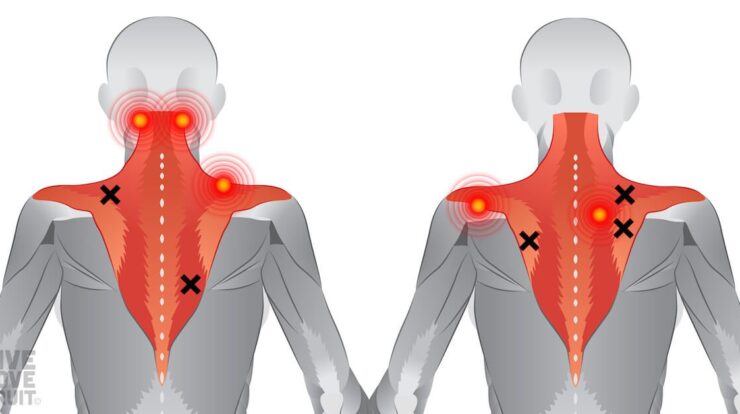
How to handle his snake yumi sin and fit kitty – Discover the secrets of caring for your beloved snakes, Yumi Sin and Fit Kitty, with our comprehensive guide. Dive into their fascinating behaviors, learn proper handling techniques, and ensure their optimal health and happiness.
Understanding the Behavior of Snakes

Snakes are fascinating creatures that can make great pets. However, it’s important to understand their natural behaviors in order to provide them with the best possible care.Snakes are generally solitary animals that spend most of their time hiding. They are ambush predators that typically eat small rodents, birds, or eggs.
It’s not easy handling his snake Yumi Sin and fit kitty, but it’s definitely doable. One way to increase your productivity in this task is to follow the same principles that insurance agents use to increase their productivity . By setting goals, prioritizing tasks, and staying organized, you can make sure that you’re taking care of both your snake and your kitty without feeling overwhelmed.
Snakes shed their skin regularly as they grow. The shedding process can take several days, and during this time, snakes may be more irritable than usual.
Recognizing Signs of Stress or Aggression in Snakes
It’s important to be able to recognize signs of stress or aggression in snakes so that you can take steps to address the issue. Some common signs of stress in snakes include:
- Hiding more than usual
- Refusing to eat
- Regurgitating food
- Striking at objects or people
- Flicking their tongue excessively
- Coiling their body tightly
If you see any of these signs, it’s important to take your snake to a veterinarian to rule out any underlying health problems. Once any health issues have been ruled out, you can start to address the stress factors in your snake’s environment.
Proper Handling Techniques

Properly handling a snake is essential for both the safety of the snake and the handler. By following proper techniques, you can minimize stress and the risk of injury to the snake.
Handling a snake named Yumi Sin and a cat named Fit Kitty can be quite the challenge. One must approach the situation with caution, ensuring both animals are comfortable and safe. Here’s a comprehensive guide that delves into the nuances of handling these unique pets, providing valuable insights on how to maintain their well-being and foster a harmonious relationship between them.
Supporting the Snake’s Body
When handling a snake, it is crucial to support its body fully. This means using your hands to support both the head and tail end of the snake, preventing it from sagging or bending unnaturally.
Avoiding Sudden Movements
Snakes are sensitive to sudden movements, which can startle them and cause them to react defensively. When handling a snake, move slowly and deliberately, avoiding any quick or jerky motions.
Lifting the Snake
To lift a snake, gently slide one hand under its belly, supporting its weight, and use your other hand to support its tail. Lift the snake slowly, keeping it close to your body to provide additional support.
Handling Bites
While snake bites are rare when handled properly, it is essential to be prepared in case of an incident. If bitten, remain calm, wash the wound thoroughly with soap and water, and seek medical attention immediately.
Feeding and Nutrition
Proper feeding and nutrition are crucial for maintaining the health and well-being of snakes. Understanding their dietary requirements and feeding habits is essential for responsible snake ownership.
Types of Food
Snakes are carnivorous reptiles that primarily feed on live or frozen prey. The specific type of prey varies depending on the snake species. Some common prey items include:
- Rodents (e.g., mice, rats, hamsters)
- Birds
- Lizards
- Frogs
- Fish
Frequency and Portion Sizes
The frequency and portion size of feedings depend on the snake’s age, size, species, and metabolic rate. Generally, young snakes need to eat more frequently than adults, and larger snakes require larger prey items. It’s recommended to consult with a veterinarian or experienced snake keeper to determine the appropriate feeding schedule and portion sizes for your snake.
Nutritional Requirements
Snakes have specific nutritional requirements that must be met through their diet. These requirements include:
- Protein:Snakes require a high protein diet to support muscle growth and repair.
- Fat:Fat provides energy and helps absorb vitamins.
- Calcium:Calcium is essential for strong bones and proper muscle function.
- Vitamins and Minerals:Snakes also require a variety of vitamins and minerals, such as vitamin A, vitamin D3, and vitamin E.
Supplements and Hydration
In addition to providing a balanced diet, it may be necessary to supplement your snake’s diet with calcium and vitamin supplements. It’s also important to ensure your snake has access to fresh water at all times.
Just like how you’ve been handling your snake Yumi Sin and fit kitty, increasing insurance agent productivity requires a delicate balance. Check out this helpful article how to increase insurance agent productivity to learn some effective strategies. Remember, it’s all about understanding your clients’ needs and providing tailored solutions, just like keeping your snake Yumi Sin and fit kitty happy and healthy.
Health and Veterinary Care
Snakes are generally hardy animals, but like all pets, they can experience health issues. Some common health problems in snakes include respiratory infections, parasites, and skin problems.
Respiratory Infections
- Respiratory infections are one of the most common health problems in snakes. They can be caused by a variety of factors, including bacteria, viruses, and fungi.
- Symptoms of a respiratory infection include wheezing, coughing, and nasal discharge.
- If you think your snake has a respiratory infection, it is important to take it to a veterinarian as soon as possible.
Parasites, How to handle his snake yumi sin and fit kitty
- Parasites are another common health problem in snakes. They can be internal or external.
- Internal parasites, such as roundworms and hookworms, can cause a variety of health problems, including weight loss, diarrhea, and vomiting.
- External parasites, such as mites and ticks, can cause skin irritation and anemia.
- It is important to have your snake checked for parasites regularly and to treat any infections as soon as possible.
Skin Problems
- Skin problems are another common health problem in snakes. They can be caused by a variety of factors, including bacteria, fungi, and parasites.
- Symptoms of a skin problem include redness, swelling, and itching.
- If you think your snake has a skin problem, it is important to take it to a veterinarian as soon as possible.
Regular Veterinary Checkups
It is important to take your snake to a veterinarian for regular checkups. This will help to ensure that your snake is healthy and to catch any health problems early on.
So, how do I handle his snake Yumi Sin and fit kitty? I mean, I love them both, but they’re both so different. Yumi Sin is all about slithering around and being sneaky, while Fit Kitty is all about pouncing and playing.
It’s like trying to teach a snake to play fetch or a cat to slither. But hey, I’m sure there are some insurance agents out there who could give me some tips on how to increase my productivity. How to increase insurance agent productivity . Maybe I should give them a call.
In the meantime, I’ll just keep trying to figure out how to handle my snake Yumi Sin and fit kitty.
Finding a Qualified Reptile Veterinarian
If you are looking for a qualified reptile veterinarian, you can ask your local pet store or herpetological society for recommendations. You can also search online for reptile veterinarians in your area.
Cohabitation and Enrichment: How To Handle His Snake Yumi Sin And Fit Kitty

Snakes are solitary creatures and do not require companionship. However, if you choose to house multiple snakes together, it’s crucial to understand the potential risks and take necessary precautions.
Cohabitation can lead to competition for food, resources, and space, which can result in stress, aggression, and even cannibalism. It’s important to select compatible species that have similar size, temperament, and dietary requirements.
Introducing Snakes
When introducing snakes, do so in a neutral environment, such as a separate enclosure or a large, empty tub. Supervise the interaction closely and separate them if any signs of aggression arise.
Enclosure Design
Provide an enclosure that meets the environmental and enrichment needs of your snakes. This includes:
- Adequate space to move around and thermoregulate
- Multiple hiding spots, such as caves, logs, or foliage
- Climbing structures, such as branches or rocks
- Appropriate lighting to provide a day-night cycle
Enrichment is essential for a snake’s well-being. Provide toys, such as balls or cardboard boxes, to stimulate their senses and encourage activity.
Ultimate Conclusion
With a deep understanding of snake care, you can create a thriving environment for Yumi Sin and Fit Kitty. Embrace their unique needs, provide a stimulating habitat, and witness the joy of a harmonious relationship between you and your reptilian companions.
FAQ Corner
What are the signs of stress in snakes?
Snakes exhibit stress through behaviors like hissing, flattening their bodies, and refusing to eat.
How often should I feed my snake?
Feeding frequency varies depending on the species and age of the snake. Consult a veterinarian for specific recommendations.





